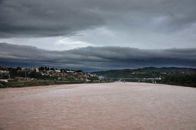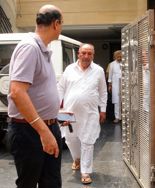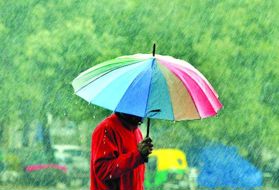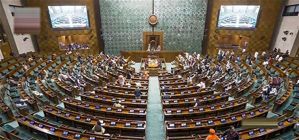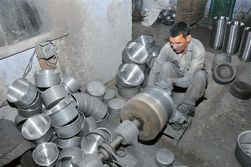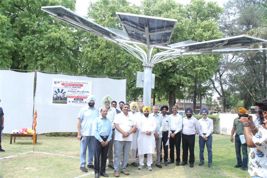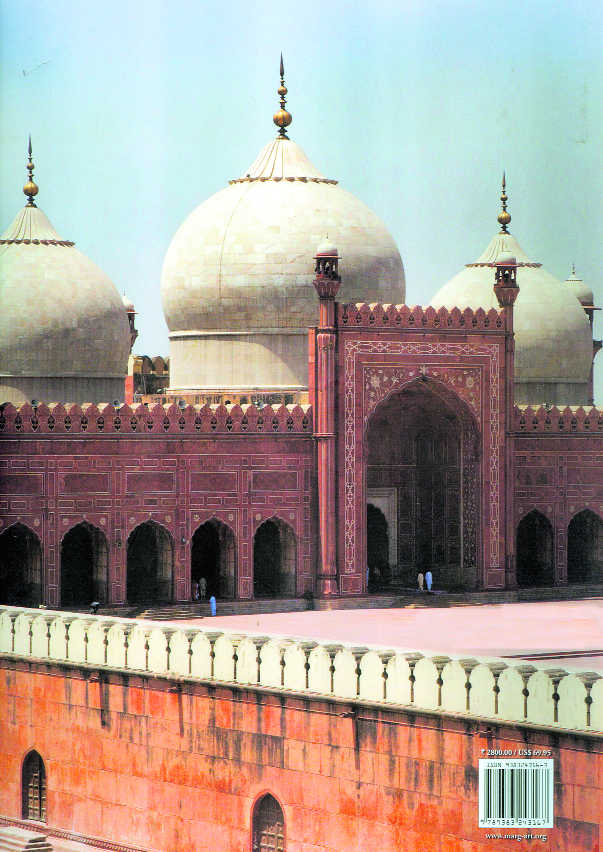
Mapping a common legacy: The Badshahi Mosque, Lahore Fort. The beautifully illustrated volume showcases memorials from both sides of the border
Rajnish Wattas
Many of us grew up on our parents’ grim tales of the Partition. After the exodus, new lives were slowly rebuilt by the diaspora in the now ‘new’ truncated Punjab; yet they never let go of their nostalgia. The unrivalled glories of Lahore, Sialkot, Gujranwala and other such cities remained etched in their hearts!
Punjab: Building the Land of the Five Rivers is organised into chapters addressing geographical regions, political rulers and building typologies such as: forts, mosques, mausoleums, Sufi shrines and Sikh gurdwaras.
Abha Narain Lambah’s introductory essay significantly delineates the vast geographical territory of what constituted the then province of Punjab — the entire land south of the Hindukush mountains and the Himalayas irrigated by the five rivers — the Jhelum, the Chenab, the Ravi, the Sutlej and the Beas.
While there were invaders, looters and plunderers marauding this frontline state — the palimpsest of built forms left behind allowed a syncretic culture to flourish. The Afghans, Mughals and Sikhs, who ruled the various large tracts, left behind Sufi dargahs. These were still revered by followers cutting across religious lines. Similarly, the Sikh chiefs and rulers; most notably Maharajah Ranjit Singh with his vast empire, who employed French soldiers also respected Hindu beliefs. He made offerings at the Jwalamukhi temple in Kangra, banned cow slaughter, and commissioned wall-paintings of Vaishnav iconography within the Lahore fort.
The architectural styles emerging out of this layering, overlaying and commingling of historic periods and rulers produced a large mosaic of monuments. It is good to have the spotlight on the lesser-sung structures of the early fortifications and public works carried out by Sher Shah Suri. Austere and functional, his focus was on building sarais for travellers, baoilis, watch towers and the ubiquitous kos minars (milestones ) along highways. Remnants of these structures can still be spotted along the present NH1 or the legendry Grand Trunk road, immortalised in Rudyard Kipling’s Kim.
Among the princely states the big change in the pervading architectural styles came with the introduction of the Indo-Sarcenic style — a hybrid of Islamic and neo-classical European elements — fiercely promoted by the British, the new dominant political and military power after Ranjit Singh’s reign. While most followed tamely, one state that stood for its independent style was Kapurthala. Maharaja Jagatjit Singh, its ruler, a great Francophile — not only built palaces, clubs, civic buildings and even a cinema hall in French architectural styles but also followed ‘Parisian’ cultural practices and had included Parisian cuisine in his royal kitchens.
A special section on forts — mostly derelict now with neglect — highlights the need for their urgent conservation. However, the piece de resistance of this rich anthology is the chapter on the cultural legacy of Lahore. The huge footprint of monuments, public buildings and the unique cultural ethos called Ganga-Jamuna tahzeeb of this city is poignantly brought alive by Nayyar Ali Dada, a leading architect of Pakistan. The chapter on the Princely Cuisine of Punjab quite literally spices up the book!
On the whole it is an elegantly designed, profusely illustrated superb volume that will appeal both to the layperson and the professionals alike – and above all to all those who respect the ethos of Punjabiyat. However, a few niggles: the absence of maps makes visualising the geographical contexts of the various monuments tedious and the some photographs taken by the contributors themselves are not exactly of professional standards. Also, some duplication in descriptions like in the case of Qila Mubarak, occurring both in the chapters on forts as well as in that on the Princely states, could have been avoided.
Hopefully, this wonderful bouquet of shared memories and glories rekindles love for our forgotten rich, common inheritance on both sides of the border.









